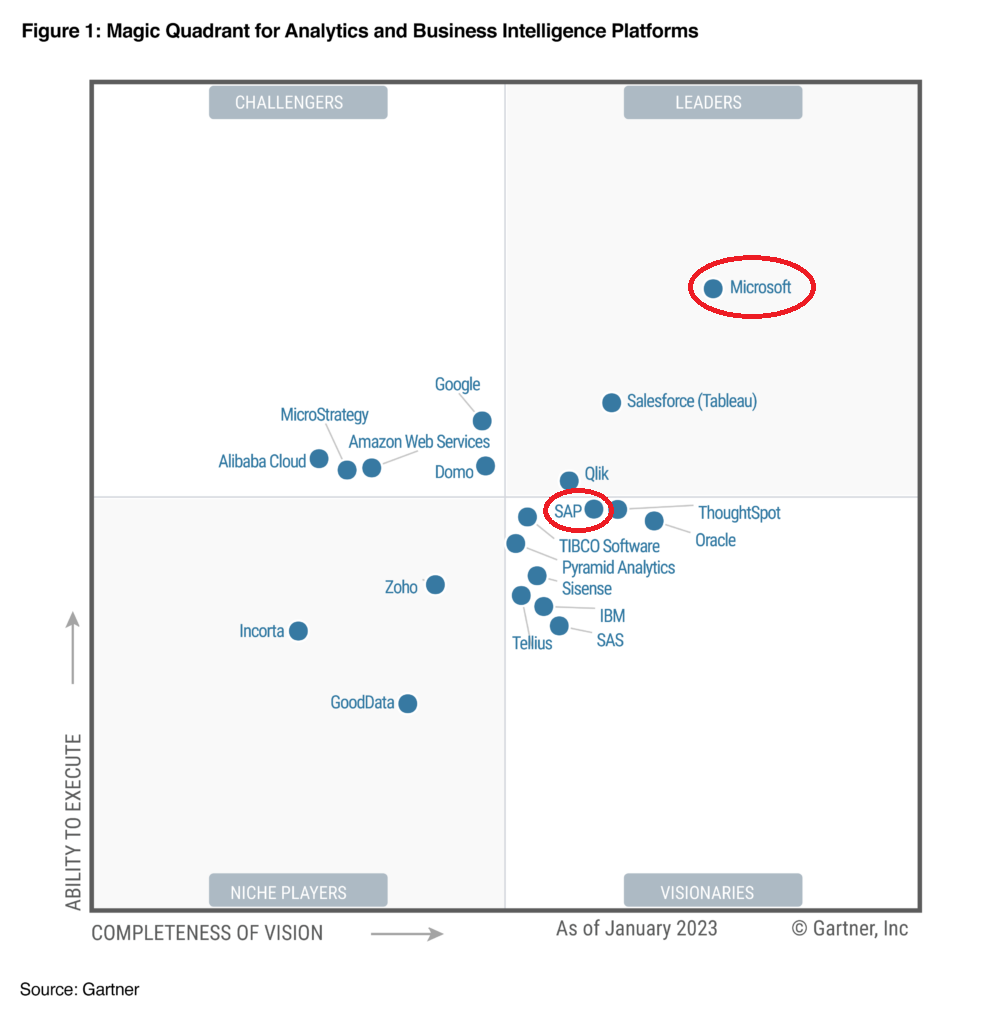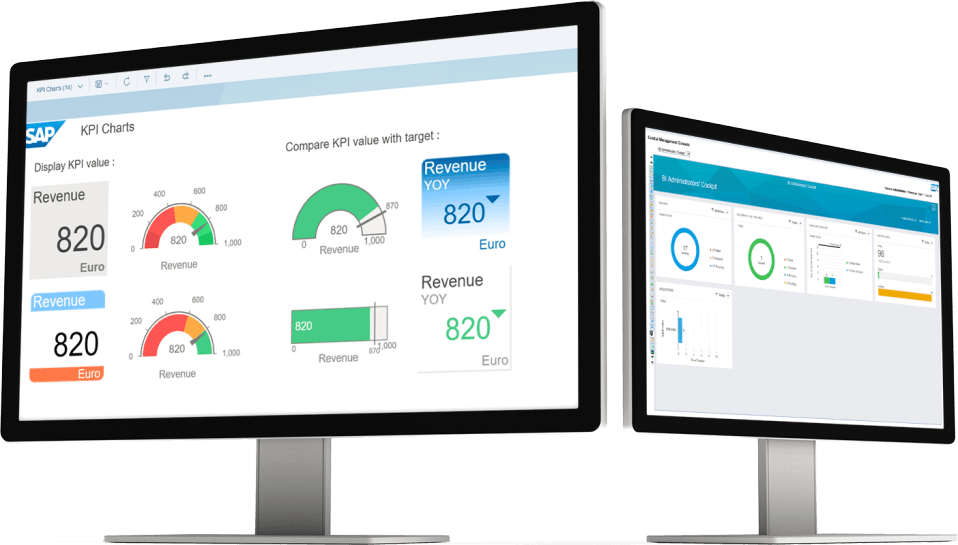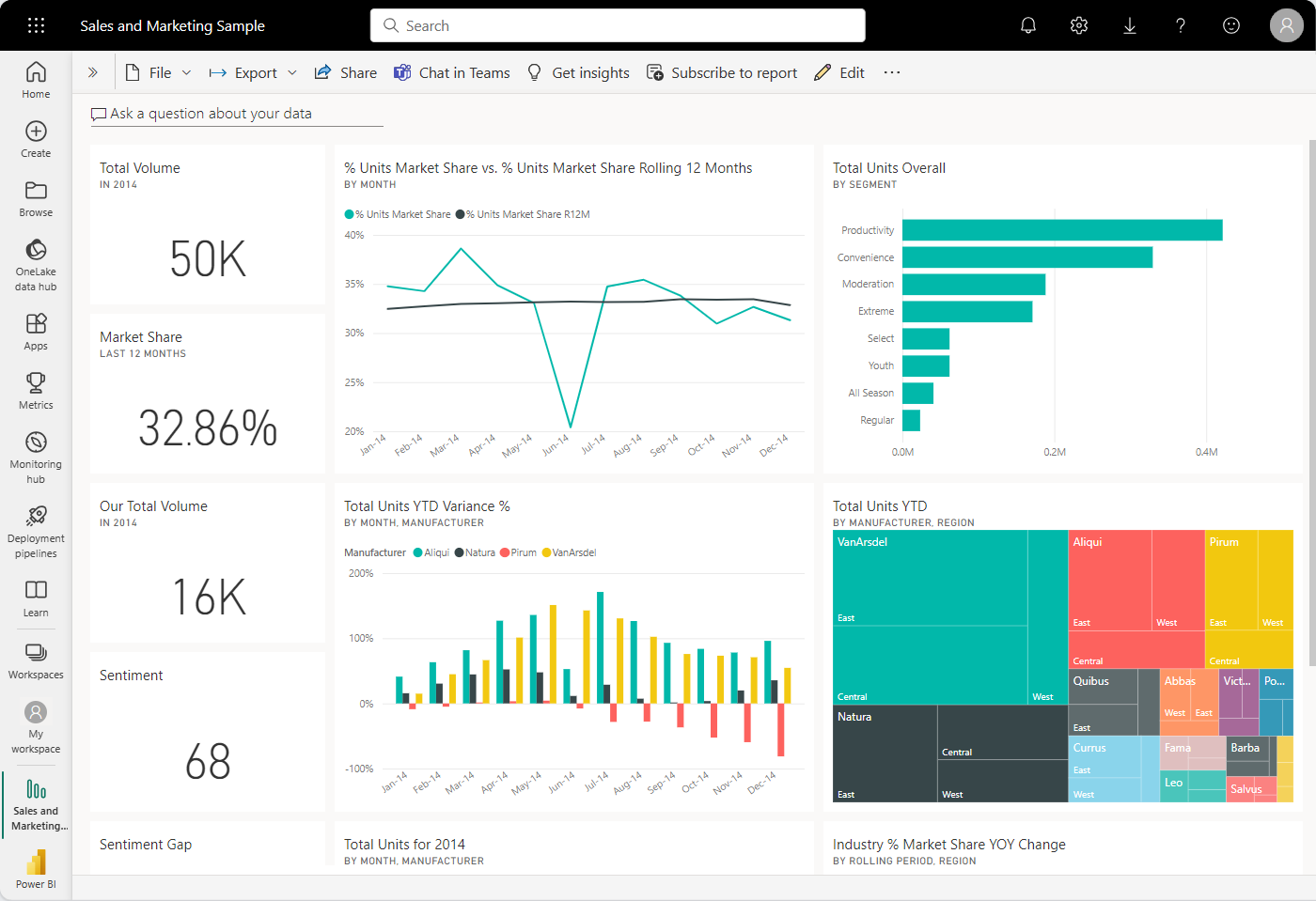Introduction: My Journey from BusinessObjects to Power BI
As a BI expert specializing in data visualization, I've seen the BI landscape evolve dramatically over the years. The BI market is undergoing a transformation. SAP's announcement that BusinessObjects will be replaced by SAP Analytics Cloud in 2025 has prompted many organizations to rethink their BI strategies. Alongside this, the rise of modern tools like Power BI and Qlik offers compelling reasons for businesses to migrate. These tools promise enhanced functionality, superior data visualization capabilities, and better integration with other modern systems.

Insights Unveiled: Gartner's Analysis of BI Market Dynamics
A comprehensive Gartner analysis sheds light on the ongoing rivalry between SAP BusinessObjects and Power BI. SAP, a long-standing presence in the BI sphere, now faces a formidable challenger in Power BI. This platform's intuitive interface, robust features, and seamless integration with other Microsoft products have propelled it to the forefront of the market, earning it a prominent position in Gartner's Magic Quadrant for Analytics and Business Intelligence Platforms. Notably, Microsoft's dominance on the Magic Quadrant, significantly outpacing its competitors, underscores the strength and appeal of Power BI in today's competitive landscape.

Challenges in Migrating from SAP BusinessObjects to Power BI
Migrating from SAP BusinessObjects to Power BI presents several challenges and blocking points:
Data Migration Complexity: Transferring data, including Web Intelligence reports and Universes, from BusinessObjects to Power BI requires meticulous planning and execution to ensure data integrity and consistency.
Integration Challenges: Integrating Power BI with existing systems and data sources, including SAP BI Platform, can be technically challenging, particularly with customizations or complex data structures.
Learning Curve: Employees accustomed to BusinessObjects, especially the semantic layer and reporting tools, may encounter difficulties in adapting to Power BI, necessitating extensive training and change management efforts.
Potential Disruption: Any migration carries the risk of disrupting business processes, leading to temporary setbacks or inefficiencies if not managed effectively.

Unlocking the Benefits of Migration
Migrating to Power BI offers numerous advantages:
Self-Service Analytics: Power BI empowers users to create their own reports and dashboards, promoting agility and faster decision-making.
Governance and Security: It offers strong governance features to manage data access and ensure compliance.
Advanced Features and Capabilities: Power BI provides robust analytics features that enable deeper insights.
User-Friendly Interface: Its intuitive design enhances productivity and user satisfaction.
Superior Data Visualization: Power BI offers a wide range of visualization options for compelling reports.
Seamless Integration: It integrates well with various modern tools and platforms.
Cost Efficiency: Over time, Power BI can lead to significant cost savings.

Automation Limitations and the Importance of Planning
While automation may streamline certain aspects of the migration process, it's crucial to recognize its limitations. Effective planning and preparation are paramount, ensuring a smooth and successful transition. Adopting a phased rollout approach and running both SAP BusinessObjects and Power BI in parallel during the migration can mitigate risks and minimize disruptions to operations.
SAP BusinessObjects: Not Dead, but Evolving
While the allure of Power BI is undeniable, SAP BusinessObjects still holds value for certain organizations. For those deeply entrenched in the SAP ecosystem, leveraging SAP Analytics Cloud within their existing infrastructure offers unique advantages. Similarly, organizations with robust reporting requirements may opt to maintain SAP BusinessObjects alongside Power BI, capitalizing on its mature reporting capabilities and semantic layer.
How Keyrus Can Facilitate Your Transition
At Keyrus, we help you find the best solution for your company through tailored services like BI maturity assessments and scoping studies. Our vendor-neutral approach ensures unbiased recommendations to maximize your ROI. With our technical expertise and change management support, we ensure a smooth transition. Contact us for more information on how we can assist in your migration journey.
Conclusion: Embracing the Future of Business Intelligence
In conclusion, the migration from SAP BusinessObjects to Power BI represents more than just a technological shift—it's a strategic imperative for organizations looking to stay ahead in today's rapidly evolving business landscape. By embracing this transition and leveraging the expertise of partners like Keyrus, organizations can unlock new insights, drive innovation, and position themselves for success in the digital age.
Written by Axel Botton-Roulin Any questions? Email axel.botton-roulin@keyrus.com
